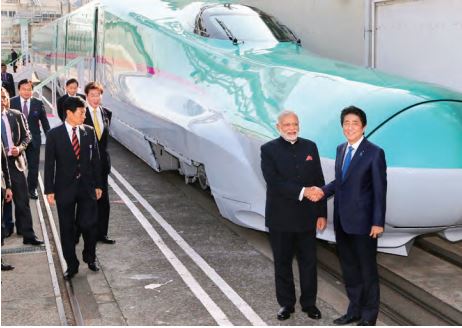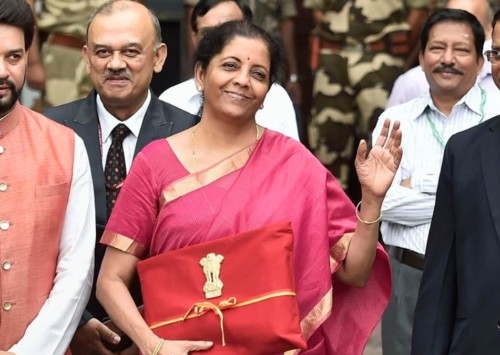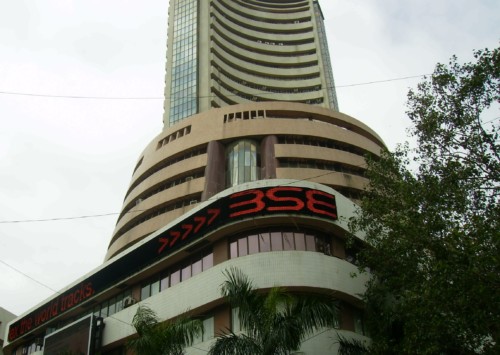Indian economy: Bold reforms awaited
Biz@India
August 2019

Nirmala Sitharaman who became the first full time woman finance minister of India presented her maiden budget on July 5
After a prolonged pause in the first term of Narendra Modi government, expectations are high for the government to finally step back into reform mode and push ahead a series of much-awaited and bold reforms.
The first budget of the second term of the Modi government came with a whole set of new promises and grand schemes. “If the present is not beautiful, the future will be,” finance minister Nirmala Sitharaman said in her maiden budget speech. Setting an ambitious though broad target of making India a USD 5 trillion economy by 2025, she unveiled her plans for the future. However, the government would clearly need to come up with more than catchy phrases and slogans to reignite the Indian economy that has been slowing down for the last few years, after having grown at a blistering pace for several years. The government needs to urgently address various reforms that have been promised since the last term in order to bring the economy back to a high growth trajectory.
Of late, the news for the economy has not been so good. The unemployment rate is at a 45-year high, GDP growth at a five-year low and private sector investment remains nearly absent.
Yet, amidst high hopes, the budget seems to have followed the path of the predecessors, with the finance minister saying that the government would keep the poor, the village and the farmers at the centre of its actions.

The new labour bill proposes to streamline multiple labour laws into a set of four labour codes
Waiting for Godot
The budget has failed to enthuse people on either side of the political spectrum. On the left or populist side, the government has failed to concretise several measures that had been announced in the interim budget presented before the elections. These included a scheme to pay a total of INR 6000 (USD 90) to small farmers, while another proposed a monthly pension of INR 3000 (USD 45) to 420 million people employed in the unorganised sector and those earning less than INR 15,000 per month.
The manifesto of BJP for the Lok Sabha election 2019 had promised to spend INR 25,000 billion (USD 350 billion) for the development of the rural sector. However, the Budget does not mention how it is going to achieve it. Lastly, the allocations in the spending on the centrally sponsored schemes and central sector schemes, compared to the interim budget remain somewhat the same, while spending on education as well as health and family welfare remains low at around 3.5 pc and 2.3 pc respectively.
Jammed investments
For those looking for signs of reforms, too, the budget proved to be a let down, not just because it failed to introduce any of the long pending reforms, but also because it failed to even clearly state the intent of the government on the issue. This is bound to dampen the private sector’s already highly muted enthusiasm for investments.
Gross fixed capital formation, which is net investment in fixed assets as a share of the gross domestic product, was 32.3 pc in 2018-19, compared with 38.7 pc in 2012-13 – a fall of 6.4 pc points in six years. Moreover, companies that may have wanted to invest would also end up facing banks that have spent the past few years groaning under extremely high levels of bad debts or non performing assets, which had risen to a highly risky 12.1 pc of all loans. The total dubious debts had risen from INR 3234 billion (USD 50 billion) in March 2015 to INR 10355 billion (USD 160 billion) in March 2018. After nearly three years of restructuring and capital infusion, the situation improved, but only marginally. In March 2019, the total bad debts of Indian banks still stood at a stubbornly high level of nearly USD 150 billion.
Faced with NPAs and stricter regulation by the Reserve Bank of India, the country’s central bank, Indian banks had almost stopped lending. The bank credit growth rates fell from over 14 pc in March 2014 to 7.3 pc in March 2017 and crawled up marginally to 8.2 pc in March 2018. There is a revival in sight as the credit growth rose rather sharply to 12.2 pc in March 2019. Though credit off take seems to be returning to more normal growth, there are still many other challenges for companies before they can begin investing again.

The bullet train project has been facing difficulties in getting land and could be delayed beyond its deadline
Challenges for business
One of the biggest hurdles in the path of investment remains the difficulty in land acquisition. Almost all projects in India, be it government or private, big or medium, face immense challenges in getting the land required for the project. Take the most prestigious project of Indian Railways, for instance. Modi’s pet project, India’s first fast train the Japanese bullet train, admittedly on an ambitious schedule, has been facing difficulties in getting the land needed and could be delayed beyond its August 2022 deadline.
The story is hardly any different for any other project and several have been abandoned due to opposition from the locals not willing to give up their land. The inefficiency of the land acquisition policy in India is a big problem and has a major impact on India’s economic growth. Acquiring land and taking permits in India have continued to be a vital bottleneck, preventing businesses and projects from completion targets. The government needs to bring in reforms that make it easier for companies to acquire land that will eventually lead to more foreign investments and growth in employment scenario.
“The main reasons for delay in timely completion of the projects are law and order problems, delay in land acquisition, delay in environment and forest clearances, funding constraints, rehabilitation and resettlement issues, permissions from local body or municipal corporation, utility shifting, contractual issues, etc,” Rao Inderjit Singh, a junior minister in the government told the Parliament recently.
Even in the infrastructure sector, more than a quarter of projects costing INR 1.5 billion (USD 23 million) and above are suffering from time overruns. The minister added that 134 out of 388 such projects are struggling through time and cost overruns simultaneously.
Analysts say that the government must amend the Right to Fair Compensation and Transparency in Land Acquisition, Rehabilitation and Resettlement Act, 2013, which was tabled in 2015 but has still not seen the light of the day. The Act regulates land acquisition and lays down the procedure for granting labour compensation, rehabilitation and resettlement of people in India.
In this year’s budget Sitharaman has announced some other proposals like UDAAN project, public-private partnership in railway infrastructure development, Bharatmala phase 2 and affordable housing. The bigger challenge however, remains the implementation aspect, and with the same quantum of allocations in these key infrastructure projects; only time will tell the progress.
Labour reforms
However, there are areas where progress has been made. One of the biggest reforms, currently in the Parliament, involves the labour code. The bill will streamline multiple labour laws into a set of four labour codes. Companies will soon not require multiple registrations, as they do now under a plethora of labour laws, as the government has proposed one licence, one registration, and one return for establishments.
The government has introduced two labour codes – the Code on Wages and the Code on Occupational Safety, Health and Working Conditions (OSH) -in the Lok Sabha. The Code on Wages Bill will subsume four existing labour laws. The Code on Occupational Safety, Health and Working Conditions Bill will incorporate 13 older laws.
The Wages Code universalises the provision of minimum wages and their timely payment to all employees irrespective of the sector and wage ceiling. The OSH Code, among other provisions, enables women employees to make a choice on working night shifts. It also enables the courts to give a portion of monetary penalties (up to 50 pc) to workers who are victims of accidents in the workplace, or their kin.
The State Bank of India, in its research report Ecowrap, has said that the federal and state governments need to pursue labour law reforms as these are necessary for improving investment and generating employment. Stressing the importance of labour law reforms, it said that according to the latest comparable figures available with the International Labour Organisation, the man-days lost in India were staggering 2.34 million as compared with 170,000 in the UK and 740,000 in the US, with Russia at a low of only 10,000.
The most challenging part of industrial relations in India is the difficulty that companies face in firing workers and most employers say this is the biggest hurdle in them hiring permanent workers and make do with short-term or project-based hirings. The new code proposes to increase the number of workers for which companies would need government permission to lay off from the current 100 to 300. Some trade unions have sharply criticised the new code saying that it would increase the risk of a worker being thrown out for demanding even legitimate rights. They say that the bill is ill-timed as the nation is struggling with the highest unemployment rate in the past 45 years.
The government says it has several other reforms in the pipeline in order to boost India’s standing in the global ranking of nations for the ease of doing business, an index where India has already jumped from 129th place to 77 in just two years. Other reforms that have been passed include easing of bankruptcy and insolvency procedures as well as arbitration and dispute resolution norms.
To ensure that the Indian economy continues to grow rapidly, private sector investment is key and that would be assured only when the government keeps on moving in the direction of carrying out other reforms consistently and removes surprises from policy decision making, such as the increase in corporate taxation rate announced in the budget or the proposed jail terms for managers of companies that fail to spend the 2 pc of their net profits as mandated by the corporate social responsibility law.
Sudden u-turns in policies can only lead to an about-turn by investors.












